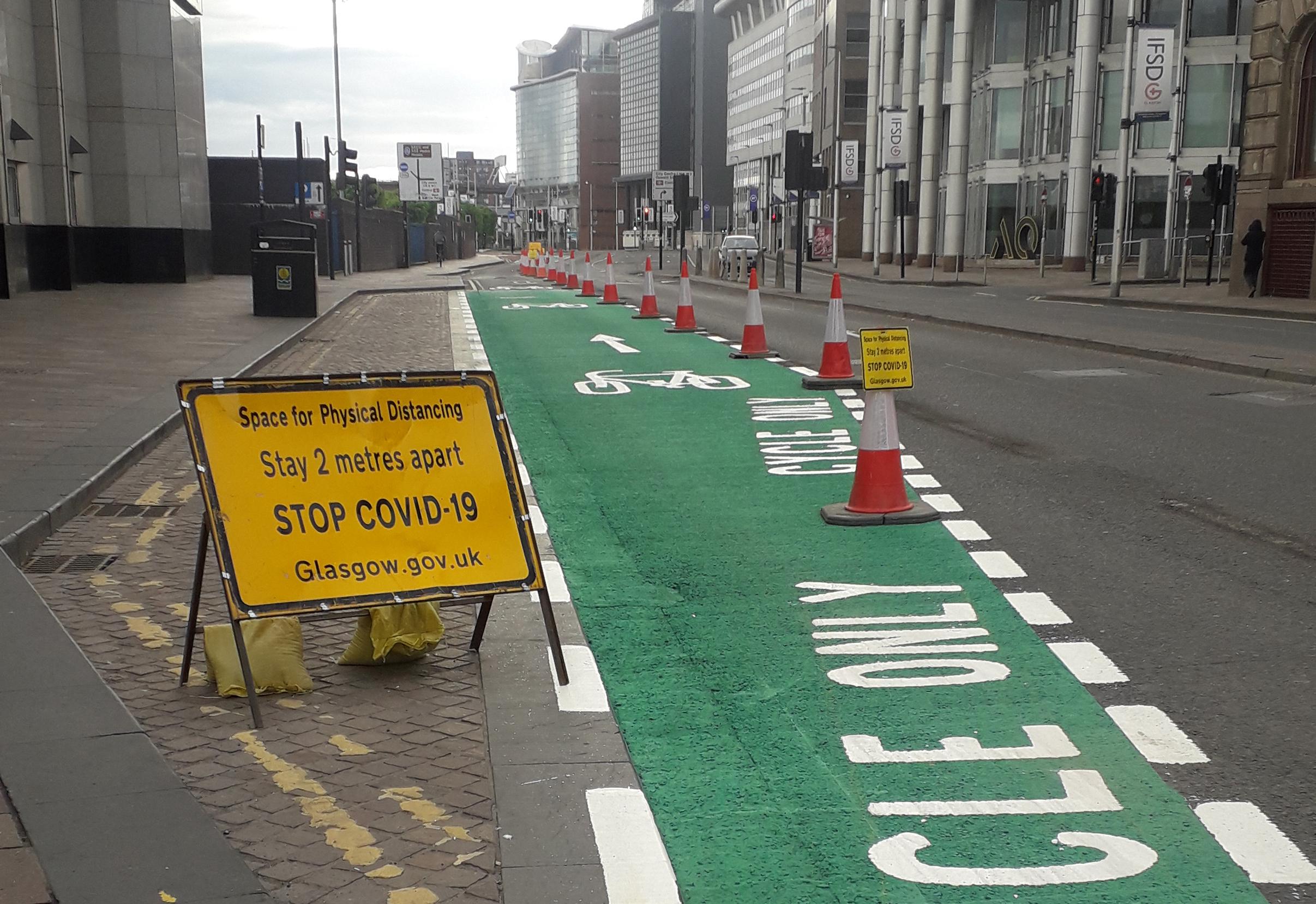

As Scotland gradually eases out of lockdown, its cities and towns are grappling with how to manage increasing volumes of pedestrians and cyclists on the streets, whilst physical distancing rules are still in place. This is becoming increasingly challenging as public transport services pick up and there are greater numbers of cars on the streets, says Ujwala Fernandes, Associate Landscape Architect, Atkins
Cities all over the world are using what is being called ‘tactical urbanism’ to take road space from cars and give it to people on foot and on bicycles to keep people moving safely during lockdown. Tactical urbanism can involve many forms of interim improvements to the public realm, including creating or widening sidewalks, introducing pop-up cycle lanes and temporarily closing streets to vehicular traffic using planters and street furniture.
Several European cities such as Milan, Paris and Berlin are using tactical urbanism to provide inspiration for making potentially permanent changes to the fabric of the city, or pilot new approaches which may in turn transform policy or inspire fundamental change to the design of cities. Similar approaches are being taken by some local authorities in Scotland where tactical urbanism is being used to inspire lasting change and influence travel behaviours long-term
Of course, introducing these measures comes at a price and over the past few weeks several local authorities across Scotland have successfully applied for funds from the £30 million pot that has been made available by the Scottish Government and managed by Sustrans as part of the Places for People Programme – a temporary infrastructure programme to support local authorities and statutory bodies provide safe walking and cycling infrastructure as the country transitions out of lockdown.
Local authorities need to act swiftly to reconfigure their streets and public spaces, so they are safe and support social activity. Normally these type of urban design proposals take months or even years to realise; however, tactical urbanism approaches overcome this by drawing on low-cost, widely available and flexible materials, objects and structures to quickly create new forms of public space.
It is also important to note that whilst the challenges in urban streets, parks and open spaces are significant on account of the greater density of population and urban form, the rural and sub-urban context does pose a unique set of challenges.
Rural areas have been inundated with visitors since lockdown began and people are using the countryside and hills as an escape from the Coronavirus which is putting undue pressures on the smaller towns and villages around tourist hotspots.
This temporary repurposing of streets for people does beggar the question: do permanent solutions lie within these temporary interventions that can help address various challenges that Scotland and other countries have been facing for decades such as climate change, air pollution, declining physical and mental wellbeing, and social inequality?
Transport and urban design professionals have been lobbying for years to get this level of investment in people-friendly infrastructure and the multiple benefits of of low-carbon, pedestrian-friendly streets and spaces to help tackle the aforementioned challenges are well evidenced.
Several European cities such as Milan, Paris and Berlin are using tactical urbanism to provide inspiration for making potentially permanent changes to the fabric of the city, or pilot new approaches which may in turn transform policy or inspire fundamental change to the design of cities. Similar approaches are being taken by some local authorities in Scotland where tactical urbanism is being used to inspire lasting change and influence travel behaviours long-term.
It is important to recognise that in order to do this planners and designers undertaking tactical urbanism must demonstrate value, engage stakeholders and meaningfully measure project successes so people and businesses can experience the change and that experience can be used to gather support and better inform decision making.
Whatever the answer may be, it is undeniable that this COVID-19 pandemic and its associated restrictions have created an epic social experiment on a global scale. The pandemic has provided us with a once in a lifetime opportunity to utilise this unprecedented investment to be bold, to test out new approaches and to learn lessons from implementation.
It has enabled us to implement greater flexibility, experimentation and innovation in our cities and public spaces. Although the need for implementing these measures is immediate, it is prudent that we consider the longer- term impacts that these so called ‘temporary’ measures can have on our lives and those of our future generations. In our haste to implement these measures, we shouldn’t lose sight of the ultimate goal – to create healthier, happier, more sustainable cities and towns and move forward into a ‘better’ normal.
TransportXtra is part of Landor LINKS
© 2025 TransportXtra | Landor LINKS Ltd | All Rights Reserved
Subscriptions, Magazines & Online Access Enquires
[Frequently Asked Questions]
Email: subs.ltt@landor.co.uk | Tel: +44 (0) 20 7091 7959
Shop & Accounts Enquires
Email: accounts@landor.co.uk | Tel: +44 (0) 20 7091 7855
Advertising Sales & Recruitment Enquires
Email: daniel@landor.co.uk | Tel: +44 (0) 20 7091 7861
Events & Conference Enquires
Email: conferences@landor.co.uk | Tel: +44 (0) 20 7091 7865
Press Releases & Editorial Enquires
Email: info@transportxtra.com | Tel: +44 (0) 20 7091 7875
Privacy Policy | Terms and Conditions | Advertise
Web design london by Brainiac Media 2020